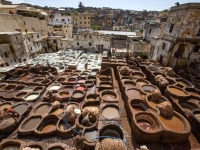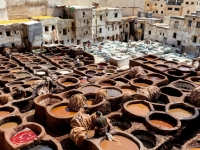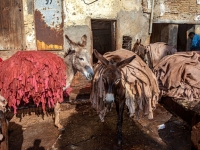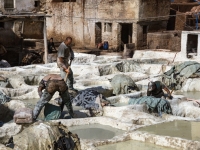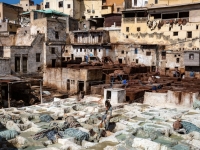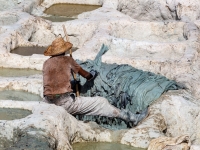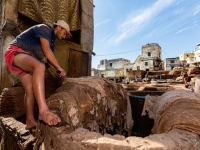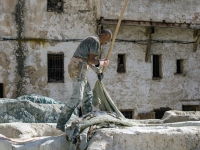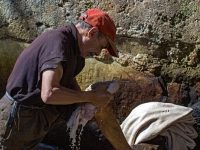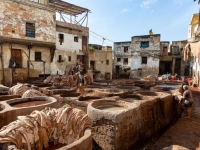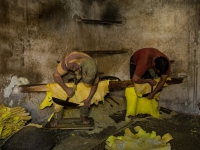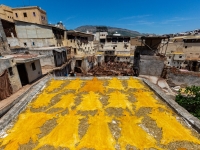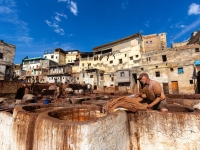Travel
UNESCO The Tanneries of Fès Morocco
Reportage of the tanneries
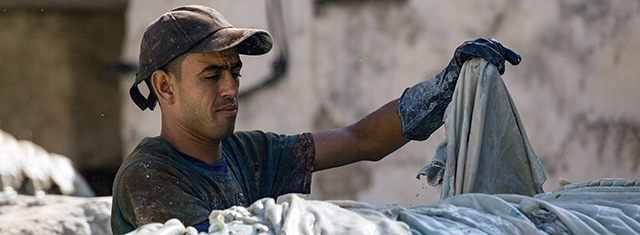
UNESCO The Tanneries of Fès Morocco (Source: Roberto Magni by Foto ReD Photographic Agency)
USPA NEWS -
Fes is the third largest city in Morocco and the oldest of the Imperial Cities. Inside its Medina, there are the ancient Tanneries of Fès or Chouara, which are among the most famous in the world, used several times even as the setting for some films. The tanneries of Fès are the oldest in the world and are so precious that they have been classified as World Heritage by Unesco.
According to a legend, the tanneries were even built by the founder of the city. Before even entering the tanneries, what is most striking is the nauseating, acrid, penetrating smell, mixed with the smell of blood from still dirty leathers. As soon as you enter you can admire the extraordinary spectacle of the small alveolus pools filled with multicolored water, from intense red, to turmeric yellow and indigo blue, enclosed among the ancient houses of the Medina. In these tanneries the manufacturing process has been entirely carried out by hand for centuries. The skins of cows, sheep, goats and camels are processed. Even today, the processes used in the sixteenth century, when Fez established itself as a leader in their production, are used here to treat hides.
The workers descend into the tubs up to the thighs without any protection, shake the skins with their feet for hours and hours. The stone tubs contain a mixture of cow urine, lime, water and salt. This caustic blend helps break down hard leather, release excess fat, flesh and hair. The hides remain immersed for two or three days, then the tanners remove excess hair, fiber and fat in order to prepare the hides for dyeing. In another set of stone tubs containing a mixture of water and pigeon droppings. This blend develops ammonia which acts as a softening solution and allows the skin to become malleable so that it perfectly absorbs the dye. The tanner uses his bare feet to knead the hides for up to three hours to achieve the desired softness.
The skins are then placed in stone vats containing natural vegetable dyes, such as poppy flower (red), indigo (blue), henna (orange), cedar wood (brown), mint (green) and saffron (yellow).
The leathers are hung on terraces and balconies to dry in the sun. The finished leather is then transported on donkeys and sold to other artisans for the production of slippers, wallets, bags etc.
It is undoubtedly a strong show… But it is really worth seeing.
The reportage of the tanneries was made by Magni Roberto and Daniela Comi By Foto ReD Photographic Agency Bologna Italy
www.fotoredagency.com
more information: https://www.redmagazine.red
Liability for this article lies with the author, who also holds the copyright. Editorial content from USPA may be quoted on other websites as long as the quote comprises no more than 5% of the entire text, is marked as such and the source is named (via hyperlink).

